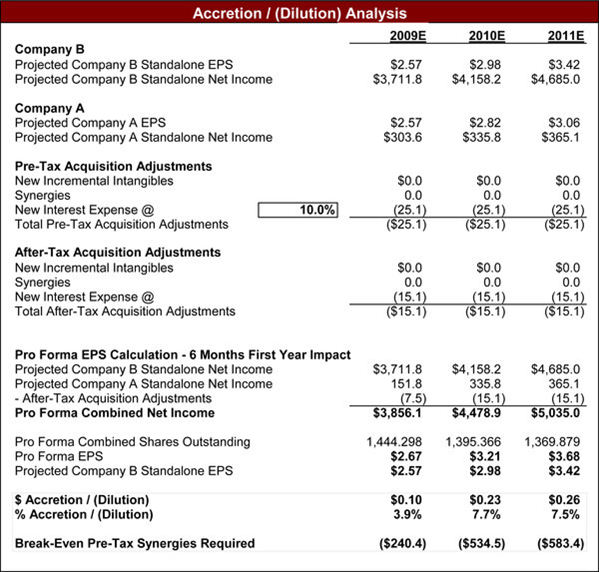Interviewer: What can lead to EPS dilution in an M&A acquisition?
Expect to get questions pertaining to Merger Models during Investment Banking interviews. The whole purpose of a merger model is to show clients the impact of an acquisition to the acquirer’s EPS and how the new EPS compares with the status quo. Simply put, if the new EPS is higher, then the transaction will be “accretive” while the inverse is called “dilutive.”
When I was in banking, I spent quite a lot of time building out Merger models, sometimes using quick-and-dirty short forms and others doing entire pro forma models that would not only show the earnings impact but the changes to capitalization and cash flow.
Now, back to our question: What can lead to EPS dilution in an M&A acquisition? There can be several reasons:
- The target Company has negative net income
- The target’s P/E multiple is greater than the acquirer’s
- The M&A creates a lot of intangible assets
- Increased interest expense due to debt used to finance the M&A
- Low or negative synergies
Candidates looking to break into the investment banking field should review our in-depth notes on Merger models in the Street of Walls Technical Interview Guide.
For those of you looking to really get an edge during interview, go through our Merger Model that is posted online. This is a fully-working investment banking M&A model. A Merger model snapshot taken from the model is shown below:
